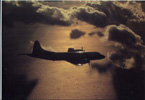ORIGINAL: Dive Bomber1
Harry - It appears that the entire discussion revolves around the issue of whether to design the Game in pbem mode to allow a Japanese player to acheive the Historical results during the first six months of time, or whether to design the Game to allow the Allied player the ability to stop a Japanese player from achieving those initial six months results.
My interpretation of the design of the current Game is that it is tailored to allow a Japanese player to achieve the first six months historical results, and then is tailored to allow an Allied player to achieve the historic moves from the South Pacific and eventually through the Central Pacific for the rest of the game.
What throws the Game out of kilter is that the same factors that allow a Japanese player to achieve the first six months' worth of conquests can also allow a Japanese player to go beyond those conquests if he moves quickly and decisively enough. Likewise, the factors that allow the Allied player to come back in the rest of the game allow the Allied player to achieve re-conquests faster than the historical Allied re-conquests if he chooses different strategies from the Historical strategies.
So while this design decision works well for playing against the AI, it causes discord for pbem play, because each side wants to be able to improve their results over the Historical results.
I'm not sure that there is an answer for pbem. No player enjoys playing a game where he feels that he can't "win", but all of the arguements and proposals being put forward essentially devolve into arguments on how one side rather than the other should have the ability to "win".
Operation IAI was nearly optimal, while Operation Z was a strategic blunder of the first water. After the first month, the balance slowly swung to a neutral position by August 1942. The Japanese were able to hold it there until the counteroffensive started at the end of 1943.
Assuming Operation Z takes place, the Allied goal would be a better start position in late 1943/early 1944, while the Japanese goal would be a worse Allied start position for that offensive. If Operation Z does not take place, the Allies would have had a different task--
defeating Japan by the end of 1943--to avoid a stalemate. (Now you see why Yamamoto was a fool as a strategist. There is limited PBEM experience that no Operation Z would have resulted in an earlier War Plan Orange offensive.)
As a game against the computer, WiTP has to be tuned so that an AI can play the Japanese side through Operation IAI and into the spring nearly optimally. Thereafter the AI needs to provide a reasonable level of opposition. If the AI is playing the Allied side, the Japanese basically need to be limited (by the same things that limited them in reality) so that they end up at a comparable high water mark. Thereafter a computer AI should be able to run a War Plan Orange offensive by rote.
As a PBEM, the game has to be tuned so that a Sir Robin strategy loses the Allied side too much, a bunker strategy provides at best marginal improvements in the Allied starting position (Nov 43) against a competent Japanese player, and a Japanese fantasy strategy is over the top in terms of Allied counter-attack opportunities. This translates into realistic logistic and planning constraints.
In other words, the middle of the war position should be recognisable and reflect a short-term strategic balance between the sides.




